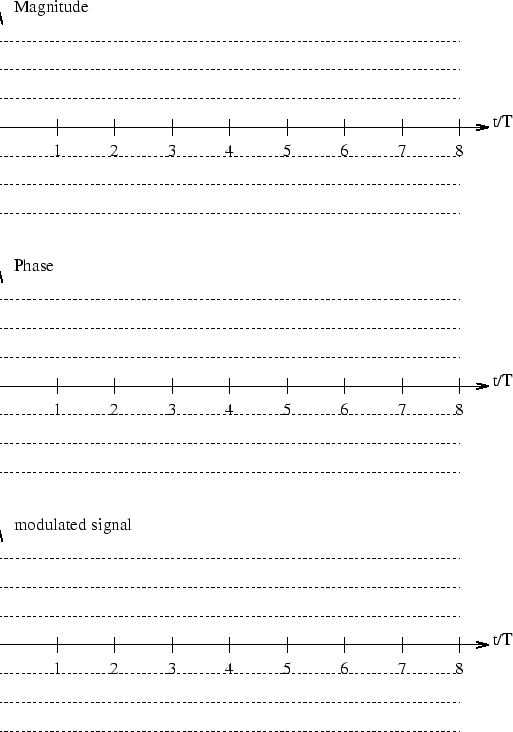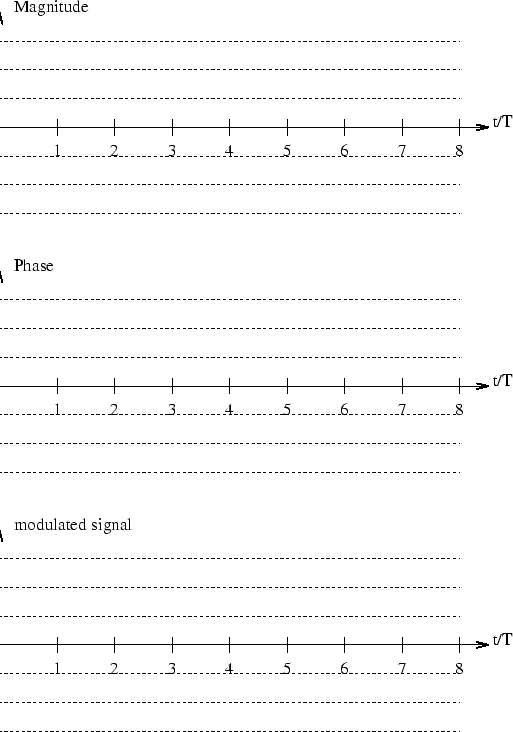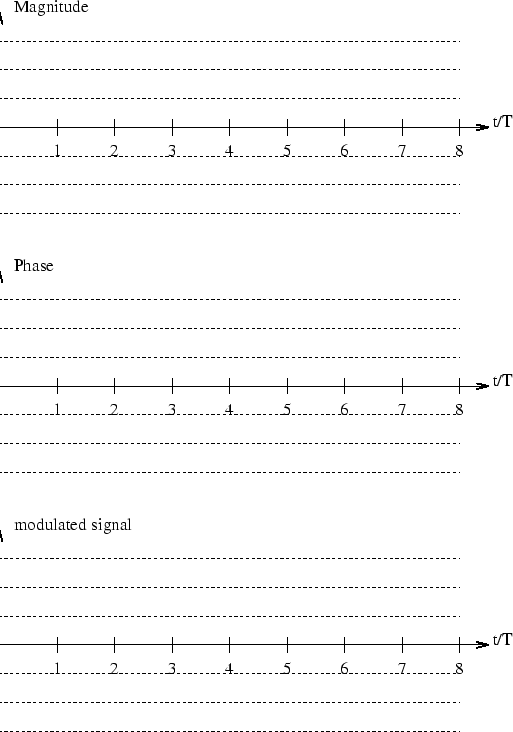


Next: Maximum Likelihood Sequence Estimation
Up: Collected Problems
Previous: Mobile Communication Channels
The symbol sequence
 is to be transmitted at a rate
of one bit per
is to be transmitted at a rate
of one bit per  seconds.
For each of the following modulation formats sketch in the space provided below
seconds.
For each of the following modulation formats sketch in the space provided below
- the magnitude,
- the phase, and
- the modulated signal assuming a carrier frequency of
 .
.
- Binary Phase Shift Keying (BPSK) with triangular pulses.
- Offset-Quaternary Phase Shift Keying (OQPSK) with rectangular pulses.
- Full-response Continuous Phase Modulation (CPM) with modulation index
and rectangular pulses.
- Partial-response (
 ) Continuous Phase Modulation (CPM) with modulation index
and rectangular pulses.
) Continuous Phase Modulation (CPM) with modulation index
and rectangular pulses.
- Comment on the bandwidth requirements for each of these modulation
formats. Which modulation format has the narrowest (widest) main-lobe?
Which modulation format provides the fastest (slowest) side-lobe decay?
Dr. Bernd-Peter Paris
2003-12-08


